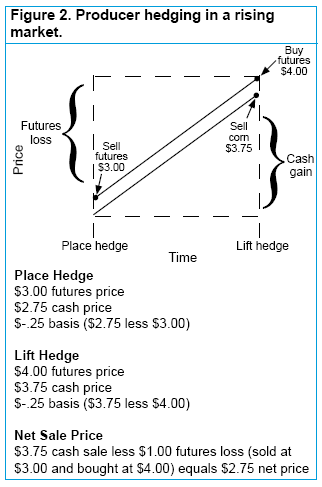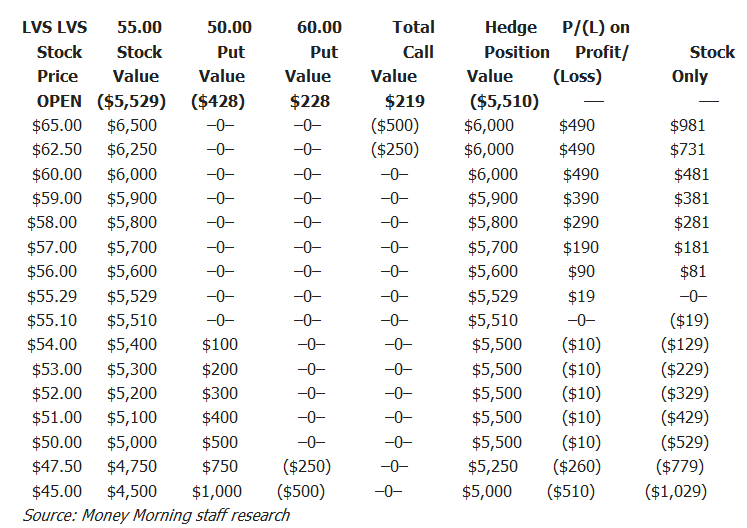The Money Market Hedge How It Works
Post on: 8 Июль, 2015 No Comment

A money market hedge is a technique for hedging foreign exchange risk using the money market. the financial market in which highly liquid and short-term instruments like Treasury bills. bankers’ acceptances and commercial paper are traded.
Since there are a number of avenues such as currency forwards, futures. and options to hedge foreign exchange risk, the money market hedge may not be the most cost-effective or convenient way for large corporations and institutions to hedge such risk. However, for the retail investor or small business looking to hedge currency risk in amounts that are not large enough to warrant getting into the futures market or entering into a forward contract. the money market hedge is a neat way to protect against currency fluctuations.
Forward exchange rates
Let’s begin by reviewing some basic concepts with regard to forward exchange rates, as this is essential to understand the intricacies of the money market hedge.
A forward exchange rate is merely the spot exchange (benchmark) rate adjusted for interest rate differentials. The principle of “Covered Interest Rate Parity ” holds that forward exchange rates should incorporate the difference in interest rates between the underlying countries of the currency pair, otherwise an arbitrage opportunity would exist.
For example, assume U.S. banks offer a one-year interest rate on U.S. dollar (USD) deposits of 1.5%, and Canadian banks offer an interest rate of 2.5% on Canadian-dollar (CAD) deposits. Although U.S. investors may be tempted to convert their money into Canadian dollars and place these funds in CAD deposits because of their higher deposit rates, they obviously face currency risk. If they wish to hedge this currency risk in the forward market by buying US dollars one year forward, covered interest rate parity stipulates that the cost of such hedging would be equal to the 1% difference in rates between the U.S. and Canada.
We can take this example a step further to calculate the one-year forward rate for this currency pair. If the current exchange rate (spot rate) is US$1 = C$1.10, then based on covered interest rate parity, US$1 placed on deposit at 1.5% should be equivalent to C$1.10 at 2.5% after one year.
Thus, US$1 (1 + 0.015) = C$1.10 (1 + 0.025), or US$1.015 = C$1.1275
The one-year forward rate is therefore US$1= C$1.1275 ÷ 1.015 = C$1.110837
Note that the currency with the lower interest rate always trades at a forward premium to the currency with the higher interest rate. In this case, the US dollar (the lower interest rate currency) trades at a forward premium to the Canadian dollar (the higher interest rate currency), which means that each US dollar fetches more Canadian dollars (1.110837 to be precise) a year from now, compared with the spot rate of 1.10.
Money market hedge
The money market hedge works in a similar manner but with a few tweaks, as the examples in the next section demonstrate.
Foreign exchange risk can arise either due to transaction exposure — i.e. due to receivables expected or payments due in foreign currency — or translation exposure. which occurs because assets or liabilities are denominated in a foreign currency. Translation exposure is a much bigger issue for large corporations than it is for small business and retail investors. The money market hedge is not the optimal way to hedge translation exposure — since it is more complicated to set up than using an outright forward or option — but it can be effectively used for hedging transaction exposure.
If a foreign currency receivable is expected after a defined period of time and currency risk is desired to be hedged via the money market, this would necessitate the following steps:
- Borrow the foreign currency in an amount equivalent to the present value of the receivable. Why the present value? Because the foreign currency loan plus the interest on it should be exactly equal to the amount of the receivable.
- Convert the foreign currency into domestic currency at the spot exchange rate.
- Place the domestic currency on deposit at the prevailing interest rate.
- When the foreign currency receivable comes in, repay the foreign currency loan (from step 1) plus interest.
Similarly, if a foreign currency payment has to be made after a defined period of time, the following steps have to be taken to hedge currency risk via the money market:
- Borrow the domestic currency in an amount equivalent to the present value of the payment.
- Convert the domestic currency into the foreign currency at the spot rate.
- Place this foreign currency amount on deposit.
- When the foreign currency deposit matures, make the payment.

Note that although the entity who is devising a money market hedge may already possess the funds shown in step 1 above and may not need to borrow them, there is an opportunity cost involved in using these funds. The money market hedge takes this cost into consideration, thereby enabling an apples-to-apples comparison to be made with forward rates, which as noted earlier are based on interest rate differentials.
Practical Examples
Example 1: Consider a small Canadian company that has exported goods to a U.S. customer and expects to receive US$50,000 in one year. The Canadian CEO views the current exchange rate of US$1 = C$1.10 as favorable, and would like to lock it in, since he thinks that the Canadian dollar may appreciate over the year ahead (which would result in fewer Canadian dollars for the U.S. dollar export proceeds when received in a year’s time). The Canadian company can borrow US$ at 1.75% for one year and can receive 2.5% per annum for Canadian-dollar deposits.
From the perspective of the Canadian company, the domestic currency is the Canadian dollar and the foreign currency is the US dollar. Here’s how the money market hedge is set up.
- The Canadian company borrows the present value of the U.S. dollar receivable (i.e. US$50,000 discounted at the US$ borrowing rate of 1.75%) = US$50,000 / (1.0175) = US$49,140.05. Thus, after one year, the loan amount including interest at 1.75% would be exactly US$50,000.
- The amount of US$49,104.15 is converted into Canadian dollars at the spot rate of 1.10, to get C$54,054.05.
- The Canadian dollar amount is placed on deposit at 2.5%, so that the maturity amount (after one year) is = C$54,054.05 x (1.025) = C$55,405.41.
- When the export payment is received, the Canadian company uses it to repay the US dollar loan of US$50,000. Since it received C$55,405.41 for this US dollar amount, it effectively locked in a one-year forward rate = C$55,405.41 / US$50,000 or US$1 = C$1.108108
Note that the same result could have been received if the company had used a forward rate. As demonstrated in the previous section, the forward rate would have been calculated as:
US$1 (1 + 0.0175) = C$1.10 (1 + 0.025), or US$1.0175 = C$1.1275, or US$1 = C$1.108108.
Why would the Canadian company use the money market hedge rather than an outright forward contract? Potential reasons could be that the company is too small to obtain a forward currency facility from its banker; or perhaps it did not get a competitive forward rate and decided to structure a money market hedge instead.
Example 2: Suppose you live in the U.S. and intend on taking your family on that long-awaited European vacation in six months. You estimate the vacation will cost about EUR 10,000, and plan to foot the bill with a performance bonus that you expect to receive in six months. The current EUR spot rate is 1.35, but you are concerned that the euro could appreciate to 1.40 to the USD or even higher in six months, which would raise the cost of your vacation by about US$500 or 4%.
You therefore decide to construct a money market hedge. You can borrow U.S. dollars (your domestic currency) for six months at an annual rate of 1.75%, and receive interest at an annual rate of 1.00% on six-month EUR deposits.
- Borrow U.S. dollars in an amount equivalent to the present value of the payment, or EUR 9,950.25 (i.e. EUR 10,000 / [1 + (0.01/2]). Note that we divide 1% by 2 to reflect half a year or six months, which is the borrowing period. At the spot rate of 1.35, this works out to a loan amount of US$13,432.84.
- Convert this USD amount into euros at the spot rate of 1.35, which from step 1 is EUR 9,950.25.
- Place EUR 9,950.25 on deposit at the 1% annualized rate for six months. This will yield exactly EUR 10,000 when the deposit matures in six months, in time for your vacation.
- The total amount repayable of the US$ loan including interest (1.75% annual rate for six months) is US$13,550.37 after six months. Now all you have to do is hope that you receive a performance bonus of at least that amount to repay the loan.
By using the money market hedge, you have effectively locked in a six-month forward rate of 1.355037 (i.e. USD 13,550.37 / EUR 10,000). Note that you could have arrived at the same result if you had used a currency forward, the rate for which would have been calculated as:
EUR 1 (1 + (0.01/2)) = USD 1.35 (1 + (0.0175/2)), or EUR 1.005 = USD 1.3618125, or EUR 1 = USD 1.355037.
- The money market hedge can be used effectively for currencies where forward contracts are not readily available, such as exotic currencies or those that are not widely traded.
- As noted earlier, this hedging technique is also suitable for a small business that does not have access to the currency forward market.
- The money market hedge is especially suitable for smaller amounts where someone requires a currency hedge but is unwilling to use futures or currency options.
Pros and cons
- The money market hedge, like a forward contract, fixes the exchange rate for a future transaction. This can be good or bad, depending on currency fluctuations until the transaction date. For instance, in the previous example of fixing the euro rate, you would feel really smart if the euro was trading at say 1.40 by vacation time (since you had locked in a rate of 1.3550), but less so if it had plunged to 1.30.
- The money market hedge can be customized to precise amounts and dates. Though this degree of customization is also available in currency forwards, the forward market is not readily accessible to everyone.
- The money market hedge is more complicated than regular currency forwards, since it is a step-by-step deconstruction of the latter. It may therefore be suitable for hedging occasional or one-off transactions, but as it involves a number of distinct steps, may be too cumbersome for frequent transactions.
- There may also be logistical constraints in implementing a money market hedge, as for instance arranging for a substantial loan amount and placing foreign currencies on deposit. As well, the actual rates used in the money market hedge may vary significantly from the wholesale rates that are used to price currency forwards.
The Bottom Line
The money market hedge is an effective alternative to mitigate currency risk, especially when other hedging tools like forwards and futures cannot be used. It is also relatively easy to set up, as one of its only requirements is to have bank accounts in a couple of different currencies. However, this hedging technique is unwieldy due to its number of steps; its effectiveness may also be impeded by logistical constraints, as well as actual interest rates that are very different from institutional rates. For these reasons, the money market hedge may be best suited for occasional or one-off transactions.














